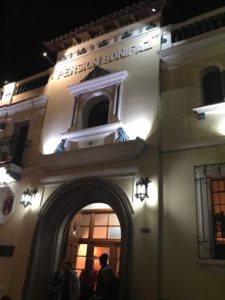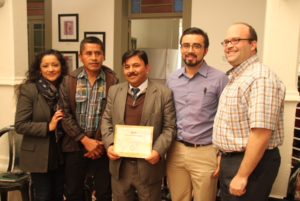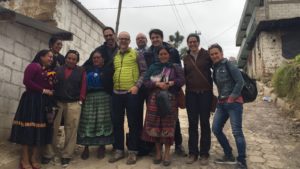A rabbi, an activist, and a researcher walk into a bar. It’s not the beginning of a joke, but the makings of the late summer Jim Joseph Foundation convening, that brought together lead staff from across the Foundation’s leadership development grantees.
As the Executive Director of Avodah, I have the privilege and pleasure of getting invited to many convenings, and I treasure them all. Convenings such as this, especially if they are designed well, have the ability to build deep and lasting relationships that can have great outcomes. I’ve been thinking about the deep work and value of relationship-building and want to offer a few thoughts about why I think it is worth spending time and money to pull people together.
- It pushes us to learn about better practices, especially practices that take more courage and intention. I loved learning from Yavillah McCoy, April Baskin, and Stosh Cotler about how they are embracing racial justice practices to transform their organizations, and how this work can help set a path to creating a more inclusive and reflective Jewish community. I’ve been working on integrating racial justice into the core of our goals and values at Avodah, and this conversation helped me see how others have done this work, and also some of the challenges they have hit. I want to continue this conversation to learn from those who are doing this work better than me, and also to support and possibly inspire those who are ready to step into strengthening their own racial justice practices in their organizations.
- They can counter loneliness at the top. While I feel very privileged to be a CEO, it can be exceedingly lonely at times, and building and strengthening a network of CEOs means I’m just a phone call away from advice and support from someone who is juggling many of the same things as me.
- They plant the seeds for members to see each other more as collaborators, and less as competitors, and to identify ways to cross-pollinate each other’s work. There’s sometimes a tendency in our work to feel resource scarcity rather than resource abundance. I have spoken to funders who get similar sounding proposals from different organizations, and have to figure out how to sort through those proposals, and try to understand who is best suited to do that work. When those of us in the field are brought together to build relationships, it allows us to see up close what other leaders and organizations have to offer. On a personal note, it reminds and inspires me to think deeply about ways that other organizations can enhance our work, and how Avodah can enhance the work of other organizations. I also want to note that I am rarely in shared spaces with organizations that are traditional Jewish educational institutions, and I found that this specific convening sparked some new thinking for me about ways that I can learn from the larger field of Jewish education.
- Funders and people in the field need to know and trust each other for all of us to succeed. Creating a space where leaders from the funding world and leaders from the not-for-profit world can have a level playing field and talk about how to create a stronger and more vibrant Jewish community is rare, and feels so vital for our future. This convening was one of those exceptional spaces, where we had the opportunity to talk about issues that are beyond our own organizational or funder vantage point, where we could begin to share our hopes and dreams for the larger field of Jewish education, and think together about how we can get there.
A convening like this summer’s convening is a piece of the puzzle in building a lasting network that can move the field of Jewish leadership forward. I hope that there will be continued opportunities to collaborate and I am excited that Avodah is part of this learning cohort.
Cheryl Cook is Executive Director of Avodah.


